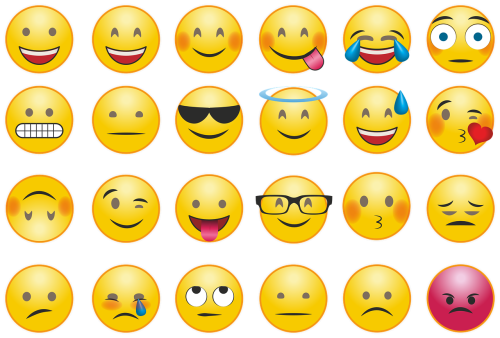Facial expressions play a significant role in human communication, especially when it comes to expressing emotions. In therapy, understanding and interpreting facial expressions can help therapists better understand their clients and provide more effective treatment. This article will explore the relationship between facial expressions and emotions in therapy and how therapists can use this information to improve their practice.

Facial Expressions and Emotions
Facial expressions are the outward manifestation of emotions, and they can reveal a lot about a person’s inner state. Different emotions are associated with specific facial expressions, such as a smile indicating happiness or a frown indicating sadness. Research has shown that people are generally able to accurately identify basic emotions based on facial expressions.
In therapy, being able to accurately interpret a client’s facial expressions can provide valuable insight into their emotional state. For example, a therapist may be able to tell that a client is feeling anxious or sad by observing their facial expressions, even if the client is not able to verbalize their feelings.
Types of Facial Expressions
Basic Emotions
These are the most basic and universally recognized facial expressions, and include expressions such as happiness (smiling), sadness (frowning), anger (furrowing the brow), fear (widening the eyes), disgust (wrinkling the nose), and surprise (raising the eyebrows).
Complex Emotions
These are facial expressions that are composed of a combination of basic emotions, such as guilt (a mixture of sadness and fear), embarrassment (a mixture of shame and guilt), and contentment (a mixture of happiness and relaxation).
Social Emotions
These are facial expressions that are used in social interactions and can convey things like agreement, interest, or empathy. Examples include nodding, tilting the head, and raising the eyebrows.
Nonverbal Cues
These are facial expressions that are not necessarily associated with a specific emotion but can convey important information, such as attention, interest, or intent. Examples include raising the eyebrows, tilting the head, and making direct eye contact.

Classification of Emotions
Psychological Emotions
Other researchers propose that emotions can be organized into psychological categories such as self-conscious emotions (shame, guilt, embarrassment), social emotions (love, gratitude, compassion), and self-regulatory emotions (hope, guilt, and envy)
Plutchik’s Wheel of Emotions
This theory proposes eight primary emotions (anger, fear, sadness, disgust, surprise, acceptance, joy, and anticipation), which can combine to create secondary or more complex emotions.
The James-Lange Theory
This theory suggests that emotions are the result of physiological changes in the body, and that different emotions are associated with different physiological states.
Using Facial Expressions in Therapy
Therapists can use facial expressions to improve their practice in several ways. One way is by using facial expressions to build rapport with clients. When a therapist is able to accurately identify and mirror a client’s facial expressions, it can create a sense of understanding and empathy, which can help to build trust and facilitate the therapeutic relationship.
Another way that therapists can use facial expressions in therapy is by using them as a tool for exploring and understanding a client’s emotions. For example, a therapist may ask a client to pay attention to their facial expressions during a particular activity or conversation and then discuss what they observed. This can help the client become more aware of their emotions and how they are expressed.
Facial Expression Analysis
Facial expression analysis is a method that uses technology to analyze and interpret facial expressions. With the help of specialized software, therapists can analyze video or still images of a client’s face and identify specific emotions or patterns of emotion. This technology can help therapists to understand their clients more deeply, and it can also be used to track progress in therapy.
However, it’s important to keep in mind that facial expression analysis is still a relatively new field, and the technology is not yet advanced enough to replace human interpretation. Therapists should always use technology as a supplement to their own observations and interpretations, rather than relying on it solely.
Current Technology Available For Facial Analysis
Facial Recognition Software
This technology uses algorithms to identify unique facial features and match them to a database of known individuals. It can be used for applications such as security and biometric identification.
Facial Expression Recognition Software
This technology uses algorithms to analyze and interpret facial expressions, often by identifying specific facial landmarks and measuring changes in muscle movement. It can be used for applications such as market research, human-computer interaction, and mental health assessment.

Emotion Detection Software
This technology uses algorithms to detect and classify emotions based on facial expressions, body language, and speech patterns. It can be used for applications such as customer service, security, and marketing.
Computer Vision
This technology uses computer algorithms and images to interpret visual information, this can be used to track and analyze facial expressions, body language, and movements over time, providing a more detailed understanding of a person’s emotional state.
Affective Computing
This technology combines multiple sources of data such as physiological sensors, facial expression recognition and speech analysis to understand and interpret human emotions.
Conclusion
Facial expressions play a critical role in human communication, especially when it comes to expressing emotions. In therapy, understanding and interpreting facial expressions can provide valuable insight into a client’s emotional state and help therapists to provide more effective treatment. By using facial expressions to build rapport, explore emotions, and supplement observations with technology, therapists can improve their practice and better serve their clients.